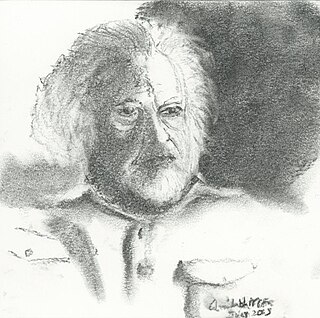| |||||
| Decades: | |||||
|---|---|---|---|---|---|
| See also: | |||||
The following lists events that happened during 1963 in South Africa.
| |||||
| Decades: | |||||
|---|---|---|---|---|---|
| See also: | |||||
The following lists events that happened during 1963 in South Africa.


uMkhonto weSizwe was the paramilitary wing of the African National Congress (ANC), founded by Nelson Mandela in the wake of the Sharpeville massacre. Its mission was to fight against the South African government to bring an end to its racist policies.

The Rivonia Trial was a trial that took place in apartheid-era South Africa between 9 October 1963 and 12 June 1964, after a group of anti-apartheid activists were arrested on Liliesleaf Farm in Rivonia. The farm had been the secret location for meetings of uMkhonto we Sizwe (MK), the newly-formed armed wing of the African National Congress. The trial took place in Pretoria at the Palace of Justice and the Old Synagogue and led to the imprisonment of Nelson Mandela, Walter Sisulu, Govan Mbeki, Ahmed Kathrada, Denis Goldberg, Raymond Mhlaba, Elias Motsoaledi, Andrew Mlangeni. Many were convicted of sabotage and sentenced to life.

Abraham Louis Fischer was a South African Communist lawyer of Afrikaner descent with partial Anglo-African ancestry from his paternal grandmother, notable for anti-apartheid activism and for the legal defence of anti-apartheid figures, including Nelson Mandela, at the Rivonia Trial. Following the trial, he was himself put on trial accused of furthering communism. He was sentenced to life imprisonment and diagnosed with cancer while in prison. The South African Prisons Act was extended to include his brother's house in Bloemfontein where he died two months later.
Arthur Goldreich was a South African-Israeli abstract painter and a key figure in the anti-apartheid movement in the country of his birth and a critic of the form of Zionism practiced in Israel.
The following lists events that happened during 1964 in South Africa.
The following lists events that happened during 1978 in South Africa.
The following lists events that happened during 1977 in South Africa.
The following lists events that happened during 1980 in South Africa.
The following lists events that happened during 1981 in South Africa.
The following lists events that happened during 1955 in South Africa.
The following lists events that happened during 1957 in South Africa.
Elias Mathope Motsoaledi OMSG was a South African anti-apartheid activist. He was Accused No.9 in the Rivonia Trial and was sentenced to life imprisonment in July 1963 with a group of anti-Apartheid revolutionaries which included Nelson Mandela who was Accused No.1.
Babette Brown was a South African-born British writer on race and diversity issues.

Liliesleaf Farm, also spelt Lilliesleaf and also known simply as Liliesleaf, is a location in northern Johannesburg, South Africa, which is most noted for its use as a safe house for African National Congress (ANC) activists during the apartheid years in the 1960s. In 1963, the South African police raided the farm, arresting more than a dozen ANC leaders and activists, who were then tried and prosecuted during the Rivonia Trial.
James Kantor was a South African lawyer and writer.

Moosa Moolla OLS was an Indian South African activist and diplomat. A member of the African National Congress, Moolla was arrested and eventually found not guilty in the 1956 Treason Trial. In 1961, he was arrested and tried for incitement at the time of the May 1961 stay-at-home protest. In May 1963, he was arrested under the 90-day law. On 11 August 1963, Moolla and others escaped prison by bribing a young guard. He later served as the ANC representative to Asia while living in exile in India. Following independence, he became the first South African ambassador to Iran.

Vernon Celliers Berrangé SCOT "Defender of the People" was an eminent South African human rights advocate (QC)
Events in the year 2023 in South Africa.
Abdulhay Jassat, also known as Charlie Jassat, is a South African political activist who was imprisoned following the Rivonia Trial. He was tortured in prison. He later escaped from prison alongside Arthur Goldreich, Moosa Moolla, and Harold Wolpe. He was awarded the Order of Luthuli.